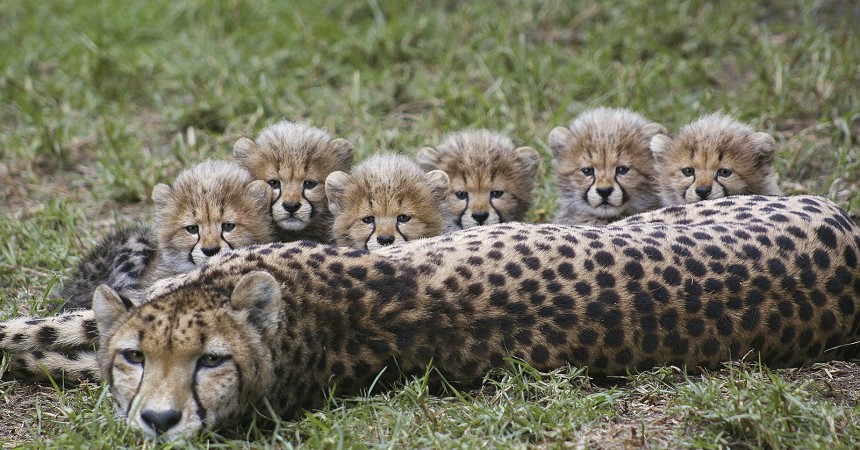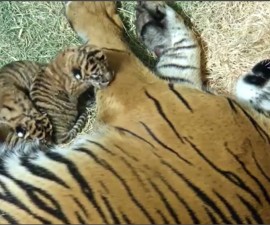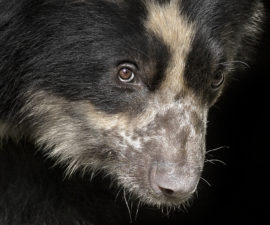The staff at San Diego Zoo Global’s off-exhibit Cheetah Breeding Center has been seeing more spots than usual lately—cheetah Addison gave birth to six squirming, squalling cubs in November! This is the second litter for the eight-and-a-half-year-old. Her first four offspring dazzle Safari Park visitors at an exhibit in Okavango Outpost, and from the very beginning, Addison has proved to be an excellent mother. Not to mention prolific; six cubs is an above-average litter size for cheetahs.
Although Addison’s previous litter was good-sized, this one came as a little bit of a surprise. “A radiograph had shown she was definitely carrying three cubs, and possibly a fourth,” explains Jillian King, a senior keeper at the Cheetah Breeding Center. But when the staff arrived on November 21, 2015 and checked the closed-circuit cameras in the den, they counted half a dozen squeaking, squirming, bitsy bundles of spotted fluff.
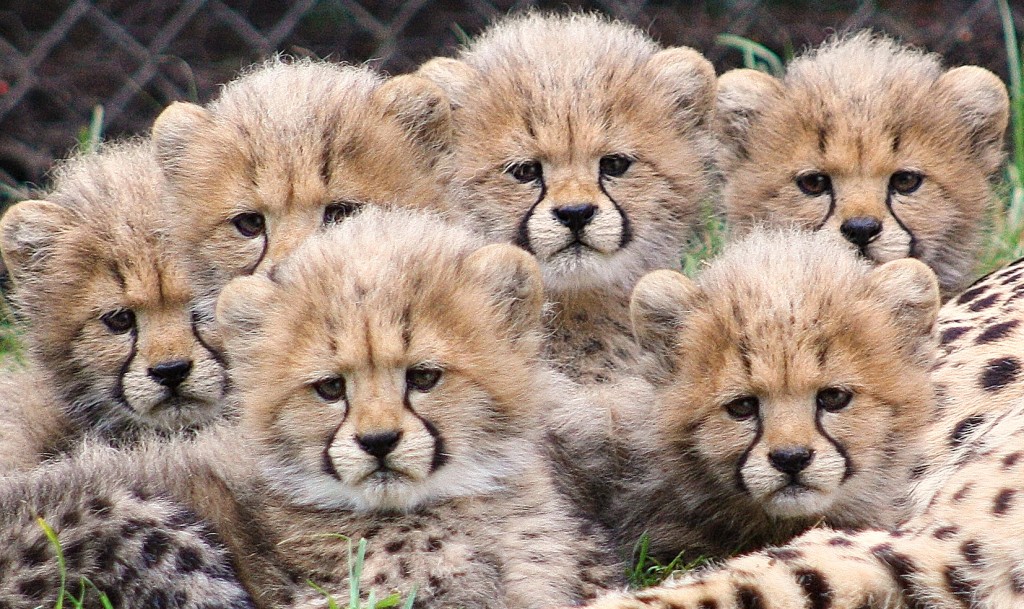 The keepers work closely with the adult cheetahs, but as Jillian explains, “this is the first litter we have tried to socialize. It’s challenging with six—they play off of each other and are very active.” In order to work with the cubs, Addison is moved to an adjacent pen where she can see what’s going on. “She seems to be quite comfortable with us interacting with the cubs,” says Jillian. “She’s a very calm cheetah by nature, and since this isn’t her first litter, we had a relationship established with her. But we always watch her reaction and base what we do on Addison’s comfort level.”
The keepers work closely with the adult cheetahs, but as Jillian explains, “this is the first litter we have tried to socialize. It’s challenging with six—they play off of each other and are very active.” In order to work with the cubs, Addison is moved to an adjacent pen where she can see what’s going on. “She seems to be quite comfortable with us interacting with the cubs,” says Jillian. “She’s a very calm cheetah by nature, and since this isn’t her first litter, we had a relationship established with her. But we always watch her reaction and base what we do on Addison’s comfort level.”
Cheetahs are found in Africa and a small portion of Iran. It’s estimated that the worldwide population of cheetahs has dwindled from 100,000 in 1900 to only 10,000 today—with about 10 percent of those cats living in zoos or wildlife parks. They are classified as vulnerable on the International Union for Conservation of Nature’s (IUCN) Red List.
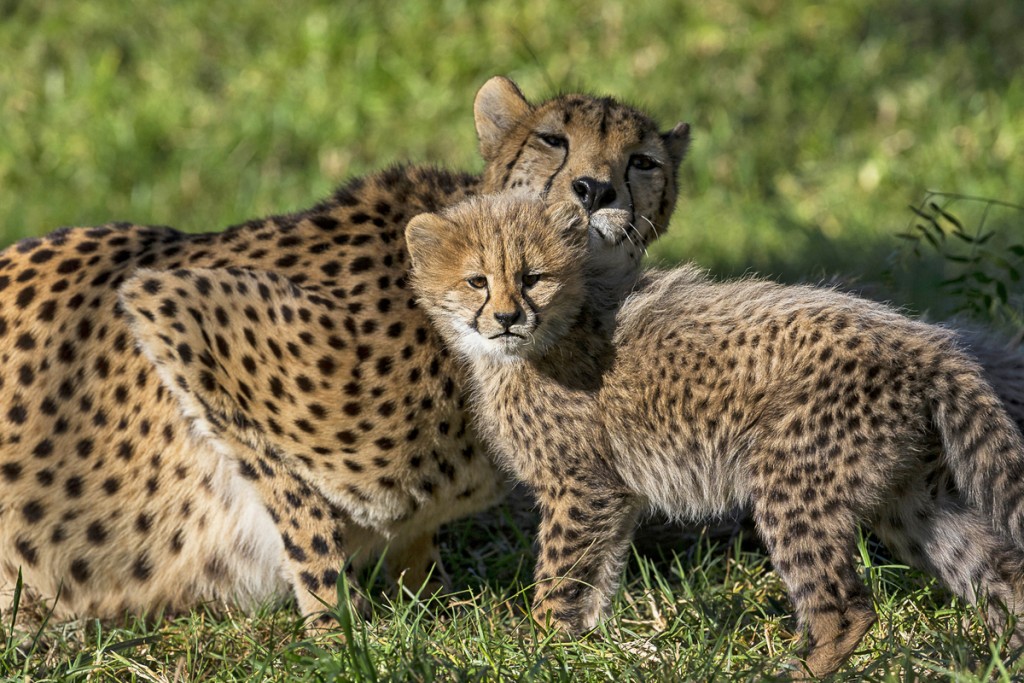 San Diego Zoo Global, which has been breeding cheetahs for more than 40 years and has had more than 135 cubs, was instrumental in the formation of a Breeding Center Coalition (BCC) to create a sustainable cheetah population that will prevent extinction of the world’s fastest land animal. There are eight other organizations participating in the breeding program for this endangered species: Fossil Rim Wildlife Center in Glen Rose, Texas; White Oak Conservation Center in Yulee, Florida; The Wilds and the Cincinnati Zoo in Ohio; the Smithsonian Conservation Biology Institute in Front Royal, Virginia; the St. Louis Zoo; the Wildlife Safari in Oregon; and Omaha’s Henry Doorly Zoo in Nebraska.
San Diego Zoo Global, which has been breeding cheetahs for more than 40 years and has had more than 135 cubs, was instrumental in the formation of a Breeding Center Coalition (BCC) to create a sustainable cheetah population that will prevent extinction of the world’s fastest land animal. There are eight other organizations participating in the breeding program for this endangered species: Fossil Rim Wildlife Center in Glen Rose, Texas; White Oak Conservation Center in Yulee, Florida; The Wilds and the Cincinnati Zoo in Ohio; the Smithsonian Conservation Biology Institute in Front Royal, Virginia; the St. Louis Zoo; the Wildlife Safari in Oregon; and Omaha’s Henry Doorly Zoo in Nebraska.
Over the years, and by sharing information with other institutions, a protocol has emerged for encouraging breeding in cheetahs. Following the recommendations of the Species Survival Plan for cheetahs, Jillian explains, “We place a female in a pen adjacent to specific males. After she’s had time to leave her scent in the habitat, we remove her and have one of the males go in. As he sniffs around, we watch and listen. His behavior tells us if she is in estrus.” One of the cues the staff looks for is a specific sound male cheetahs only make in relation to breeding—a staccato call known among researchers as a stutter-bark. “If we see and hear the signs, we put the male and female in separate enclosures with a common fence line to see what signals she sends,” says Jillian. The barrier is important since the match isn’t a sure thing. Sometimes, a female outright rejects a male even though he’s doing and “saying” all the right things. If the signs are all promising, the cheetahs are given access to each other. The rest is natural history.
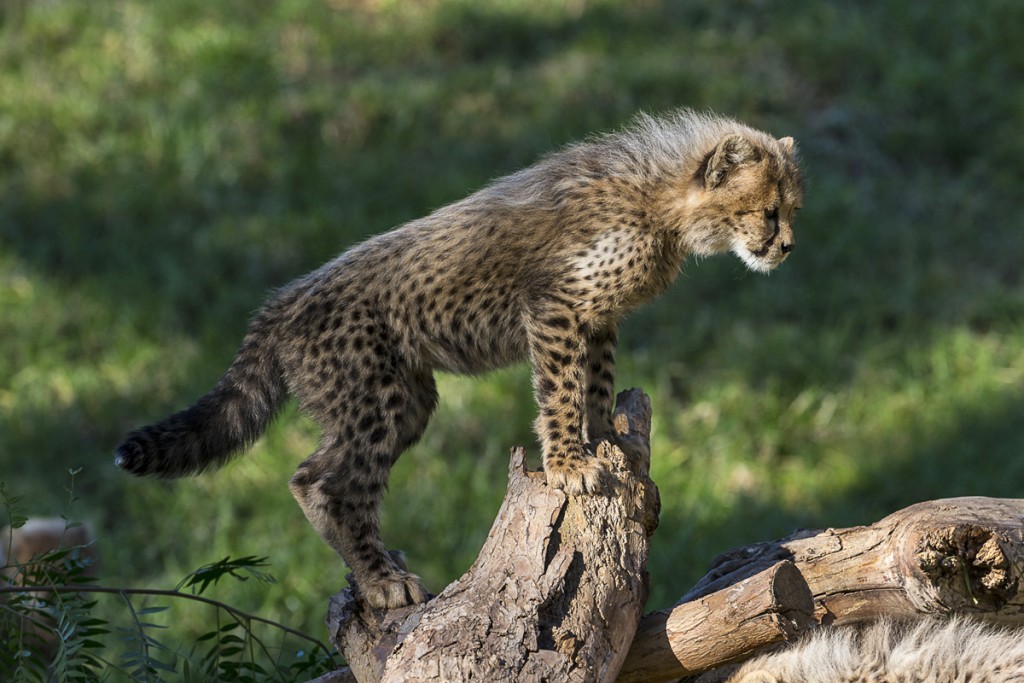 BCC member institutions have monthly phone meetings to discuss challenges and changes we want to make. “It’s been a really good prototype, as far as what we can do to get a self-sustaining population of cheetahs in managed care,” says Jillian. “Only about a third of females will actually breed. Together, we’re trying to find out why.” At the same time, the efforts of the BCC are creating a protected, carefully managed gene pool that may be needed if these extraordinary cats continue to decline in their native habitat.
BCC member institutions have monthly phone meetings to discuss challenges and changes we want to make. “It’s been a really good prototype, as far as what we can do to get a self-sustaining population of cheetahs in managed care,” says Jillian. “Only about a third of females will actually breed. Together, we’re trying to find out why.” At the same time, the efforts of the BCC are creating a protected, carefully managed gene pool that may be needed if these extraordinary cats continue to decline in their native habitat.
Addison’s cubs will stay with her for a year, but in the future they may go to other sites where they can participate in bolstering the world cheetah population. Breeding cheetahs will help us better understand the needs of these extraordinary cats, while keeping the gene pool viable at the same time.
Wendy Perkins is a writer and blog coordinator for San Diego Zoo Global.

